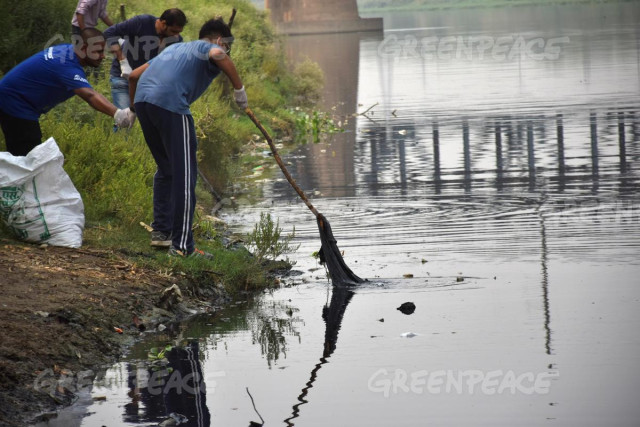Delhi's Yamuna Cleanup Gears Up: Asia's Largest STP Set for Trial Run
- Posted on October 24, 2023
- Environment
- By Arijit Dutta
- 481 Views
After multiple delays, Delhi's largest sewage treatment plant (STP) is ready for trial runs, commencing around Diwali. This significant initiative is aimed at cleaning up the Yamuna river, one of India's most polluted water bodies.
 Image Source -www.media.greenpeace.org
Image Source -www.media.greenpeace.org
After multiple delays, Delhi's largest sewage treatment
plant (STP) is ready for trial runs, commencing around Diwali. This significant
initiative is aimed at cleaning up the Yamuna river, one of India's most
polluted water bodies.
The Okhla sewage treatment plant, boasting a massive
capacity of 564 million liters per day (MLD), is not only the largest in India
but one of the most substantial sewage treatment facilities in Asia. It was
initially expected to be operational by December 2023, with a later deadline
extension to July of the same year.
According to G Asok Kumar, the Director General of the
National Mission for Clean Ganga (NMCG), construction and setup of the plant
are now completed, and water inflow into the STP will commence by November 15.
This will divert a significant amount of dirty water from entering the Yamuna
river, thus initiating a positive change in its water quality by December.
The Okhla STP is a pivotal project in the mission to restore
the Yamuna river's health. It is expected to release treated water into the
river starting in November. However, it may take a few weeks to stabilize
completely. Further steps, including sludge treatment and biogas generation,
are anticipated to begin by March of the following year.
The polluted state of the Yamuna river is most evident
during the festive season in November, when toxic foam blankets its surface,
adversely affecting the environment and the devotees who visit. The NMCG is
determined to tackle this problem by upgrading existing STPs and implementing
new ones.
Two additional STPs, Rithala and Kundli, with capacities of
182 MLD and 204 MLD, respectively, have already commenced trial runs. The 318
MLD Coronation Pillar Sewage Treatment Plant was completed last year.
In total, 12 projects under Namami Gange have been initiated
to treat over 1,200 MLD of sewage in Delhi, with a focus on reducing pollution
in the Yamuna river. The Hindon river, a major tributary, has also been
identified as a priority area for restoration.
The NMCG has launched an online dashboard called PRAYAG to
monitor the performance of over 100 STPs in Yamuna and Ganga in real-time. It
ensures they adhere to water quality standards and meet the required norms.
While some STPs do not meet the revised water quality standards as of September 2023, efforts are underway to upgrade and align them with the new norms. The goal is to ensure that by 2025, the entire Ganga system, including the Yamuna, experiences a substantial improvement in water quality.
Also Read: Hamas Releases Elderly Hostages, Raising Hope For Others In Gaza Crisis
The National Green Tribunal (NGT) had revised water quality
standards in 2019, specifying that the Biochemical Oxygen Demand (BOD) and
Total Suspended Solids (TSS) should be below 10 mg/L. Efforts are now being
made to encourage the Delhi Jal Board to upgrade existing STPs, while new STPs
are being sanctioned with higher BOD:TSS standards of less than 5 mg/L.
The commencement of the Okhla sewage treatment plant's trial run is a significant step toward achieving a cleaner Yamuna and a healthier ecosystem. It marks a pivotal moment in the quest to rejuvenate this vital waterway, demonstrating a dedicated commitment to environmental restoration.



